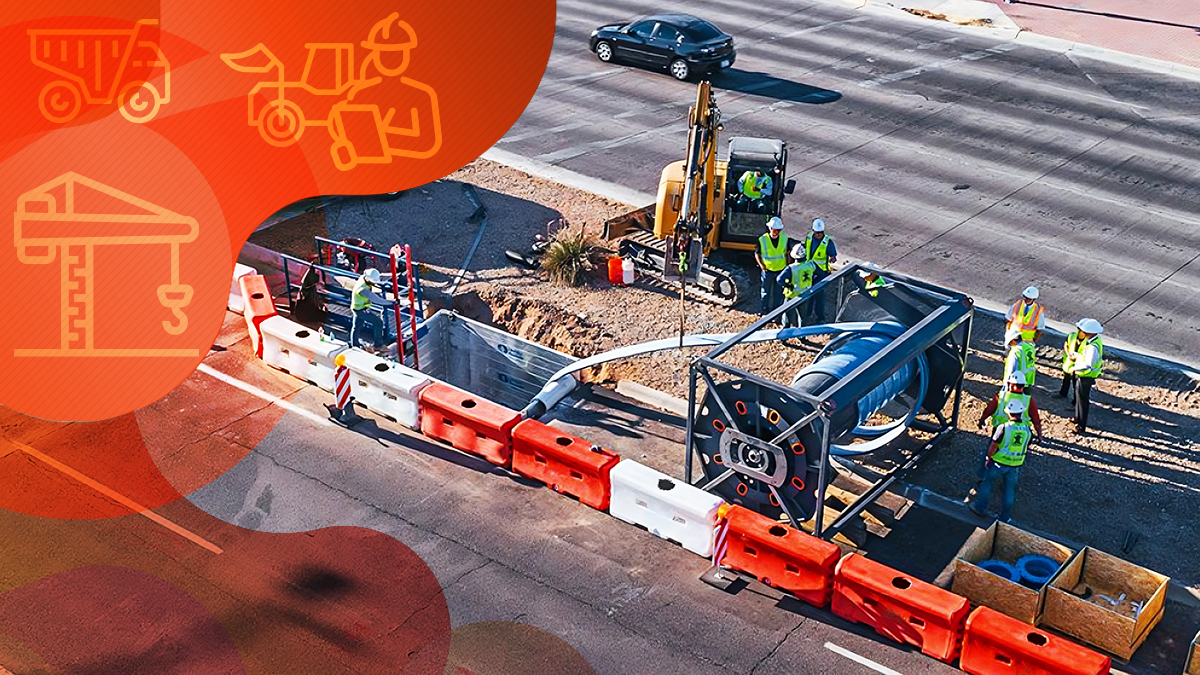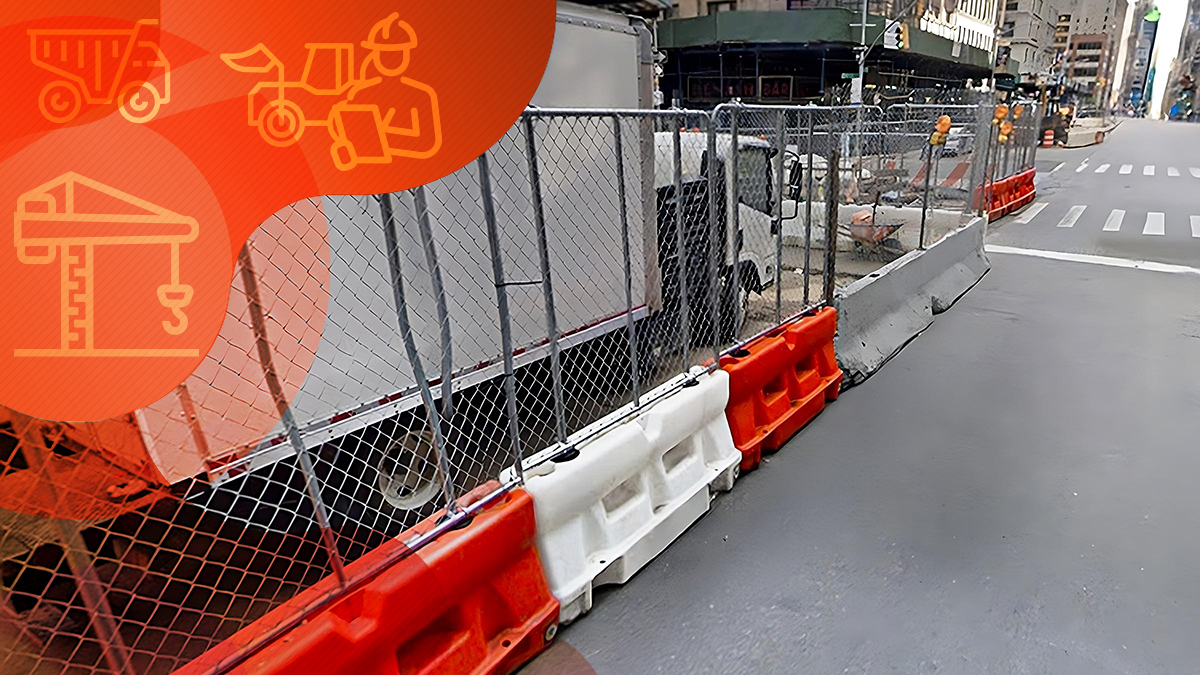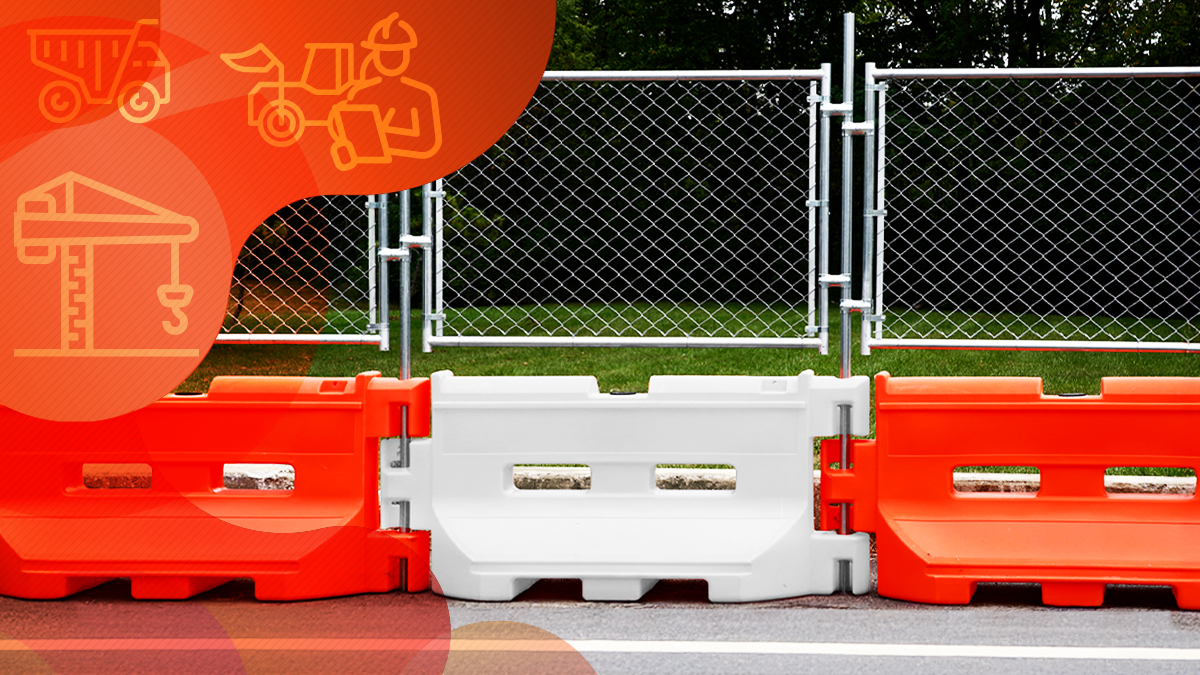How to Prevent a Water-Filled Barricade from Cracking When Freezing
Learn how to keep your water-filled barricades functional in freezing temperatures with practical, chemical-free solutions.

When you need traffic control solutions that are as versatile as they are effective, water barricades are an excellent choice. In addition to being high-vis and incredibly impact-resistant, they’re also easy to use, install, and move from place to place, thanks to the ability to fill or empty them at will.
However, it’s important to exercise caution during freezing winter temperatures. When water freezes, it expands, which can warp or crack your water barriers. Understanding how to prevent water from freezing is crucial to maintaining the barrier's effectiveness.
Why Freezing Is a Concern
Water-filled barriers are so effective firstly due to the weight of the water but also because of the way water naturally behaves in its fluid form.
Under normal circumstances, water comfortably fills your barricades and helps your barriers absorb the energy of an impact. But when sub-freezing temperatures cause the water to solidify, it hardens and expands, which affects your barriers in the following ways.
Equipment damage
When the water inside your water-filled barriers freezes and expands, it can impact the integrity of the equipment itself. Materials can warp, crack, or otherwise lose their functionality, especially when subjected to repeated freeze-thaw cycles.
Safety concerns
Frozen barriers are absolutely less effective at absorbing force in the event of an impact. in addiction, barricades that have cracked or been otherwise damaged by freeze cycles can cause safety problems of their own. They can result in debris, sharp edges, and other hazards that endanger workers, as well as damage vehicles.
Why Anti-freeze Products are NOT a good Solution
Naturally, adopting a strategy to stop water from freezing is one way to approach the frozen water barrier issue. But stop and think before turning to commercial anti-freeze products to fix the issue. Let’s go over a few of the most important reasons why anti-freeze really isn’t the way to go.
Environmental risks
Ethylene glycol, as well as some propylene glycol-based products, is toxic and can pose serious threats to the surrounding environment if it leaks, spills, or isn’t properly disposed of after use. It can harm wildlife, as well as disrupt the delicate balance of nearby ecosystems.
Potential slip hazards
Leaking or spilled anti-freeze products can create slip hazards that threaten the safety of workers, pedestrians, and even vehicles. Many of these products are also as toxic to humans as they are to animals, plants, and ecosystems. Accidentally ingesting them or inhaling the fumes can lead to serious health issues.
Possible equipment damage
Some anti-freeze products can react to the compounds in barrier materials and cause them to deteriorate, especially over time. Certain barricade options may become brittle and weak, making them less reliable. Your barriers may also fail to last as long as they otherwise would.
Higher costs
Anti-freeze products are also generally more expensive than other solutions. Costs can really add up throughout the winter, especially if water barricades constitute a large part of your approach to traffic control.
The Best Solution to Prevent a Water Barrier from Freezing
So, how do you keep the water in your barricades from freezing without bringing chemicals into the picture? The most effective solution also happens to be one of the simplest and most cost-effective – adding salt to your barricade water.
Salts like calcium chloride interrupt the crystallization process that turns water into ice by lowering the freezing point. It also does this without damaging your equipment or posing as big a risk to workers or the environment.
The higher the concentration of salt in the water, the lower the freezing point can become – anywhere from 8 to -46 degrees Fahrenheit instead of the typical 32 degrees. The exact amounts of salt needed depend on how much water you’re looking to treat.


For example, a barricade system that contains 72 gallons of water will need the following approximate amounts of salt to lower its freezing point to desired levels:
8 degrees Fahrenheit = 96 lbs. of salt
-4 degrees Fahrenheit = 120 lbs. of salt
-20 degrees Fahrenheit = 144 lbs. of salt
-46 degrees Fahrenheit = 168 lbs. of salt
In other words, the colder it gets where your work zone is located, the more salt you’ll need per gallon to stop your water barriers from freezing. Adjust as needed according to local temperatures and the water volume in your barricade system of choice.
Additional Water Barricade Maintenance Tips
Freeze-proofing your water barricades should be part of a larger, more comprehensive winter maintenance strategy. Keep the following tips in mind throughout the colder months to maximize the longevity and performance of your water-filled barrier equipment.
Perform regular inspections
Regular inspections should be part of your equipment maintenance strategy all year, but they become particularly important during the winter. Check your barriers for signs of freezing, especially if it’s been colder than expected. Use a log to track your checks and ensure they’re completed on time.
Look for problems with structural integrity, as well (e.g. cracks or leaks). Pay special attention to caps, seams, and other points of connection, as those are the most likely places for weaknesses to develop.
Avoid overfilling barriers
Overfilled water barricades run the risk of cracking, warping, or bursting if the water inside does freeze and expand as a result. Leave a little room in each barrier section to minimize the chances of this happening.
Place barriers accordingly
When possible, position your barricade sections so that they’re shielded from the worst of any snow, ice, or harsh winds. Double-check to make sure your sections are securely linked to one another to minimize the risk of displacement if winds pick up or an impact occurs.
Keep barricades clear of build-up
Be sure to include your barrier lines when clearing your work site of built-up snow and ice. This helps keep slipping hazards to an absolute minimum and protects the integrity of the equipment. It also ensures your barriers remain fully visible to passing pedestrians, vehicles, and team members.
Stock up on spare parts
Always keep some backup barrier sections and spare parts on hand, just in case. Even the hardiest, most reliable traffic control products and parts can be damaged or eventually reach the end of their lifespan. Keeping backup supplies at the ready helps reduce any necessary downtime if barricades need repairs.
Keep Your Water Barricades Strong All Winter Long
Water barriers are generally a lot more convenient, portable, and resilient than concrete barriers, especially for temporary purposes. Taking the time to prepare water barricades for possible freezes, perform regular maintenance, and promptly conduct any necessary repairs lets you continue to enjoy these benefits all year round. It also helps keep your job site, work team, and passing vehicles safe.
For more details on water barricade maintenance during winter, download our FREE guide!


Trend now

Reducing Impact Damage with Water-Filled Plastic Jersey Barriers
Understanding the effects of barrier materials on vehicles and their occupants can help improve road safety.

Choosing Between Concrete or Plastic Jersey Barriers
Not all barriers are built the same. Here’s what to know before choosing between plastic and concrete.

Advantages of Water Barriers with Fence Toppers
Learn how a fence topper transforms water barriers into a more secure, private, and effective work site solution.

